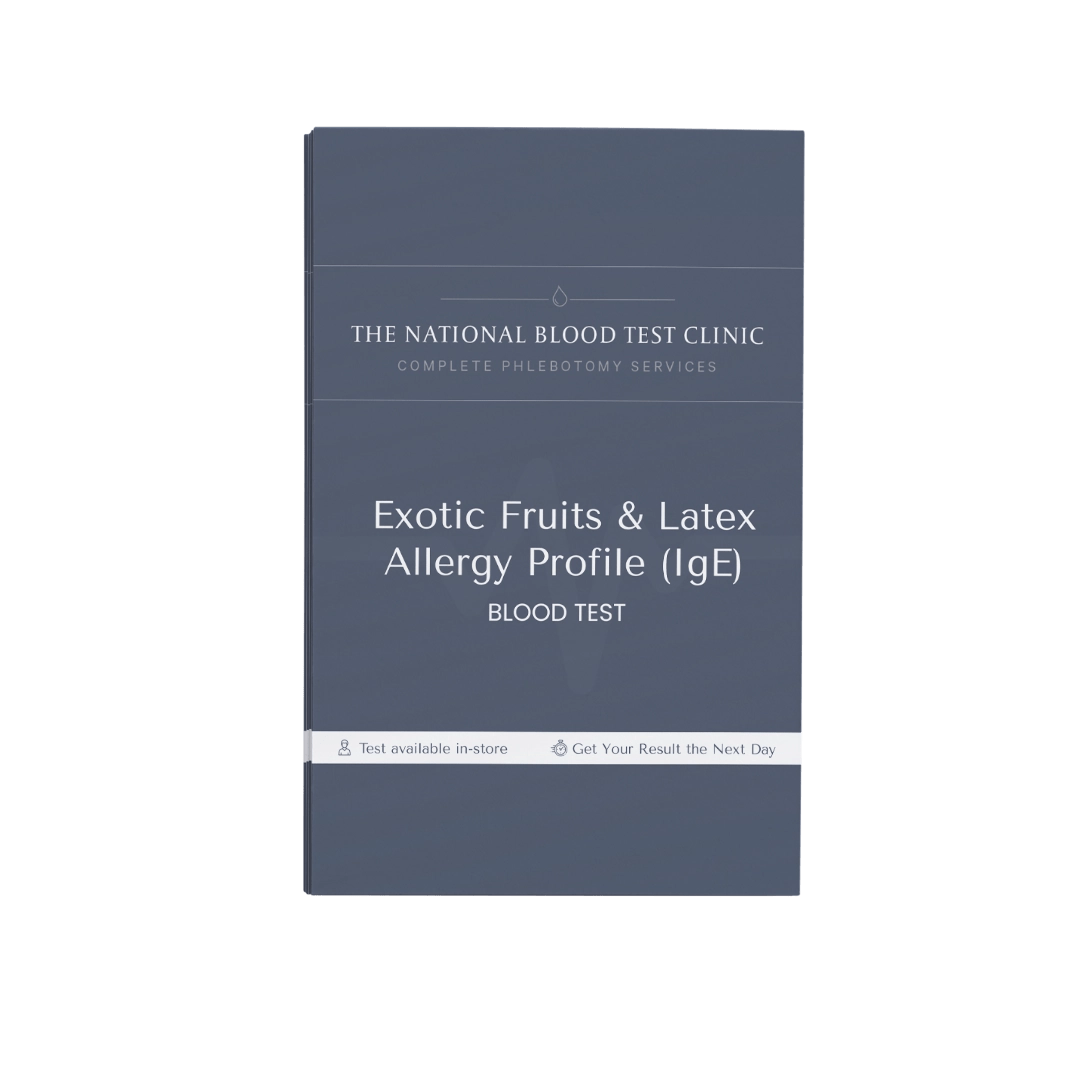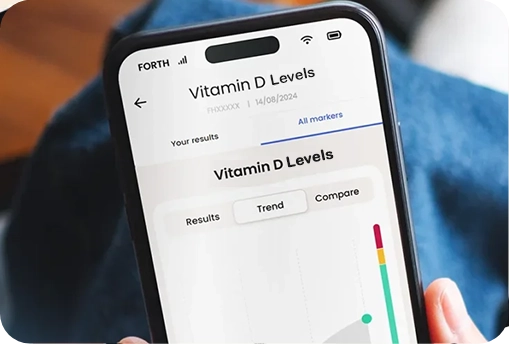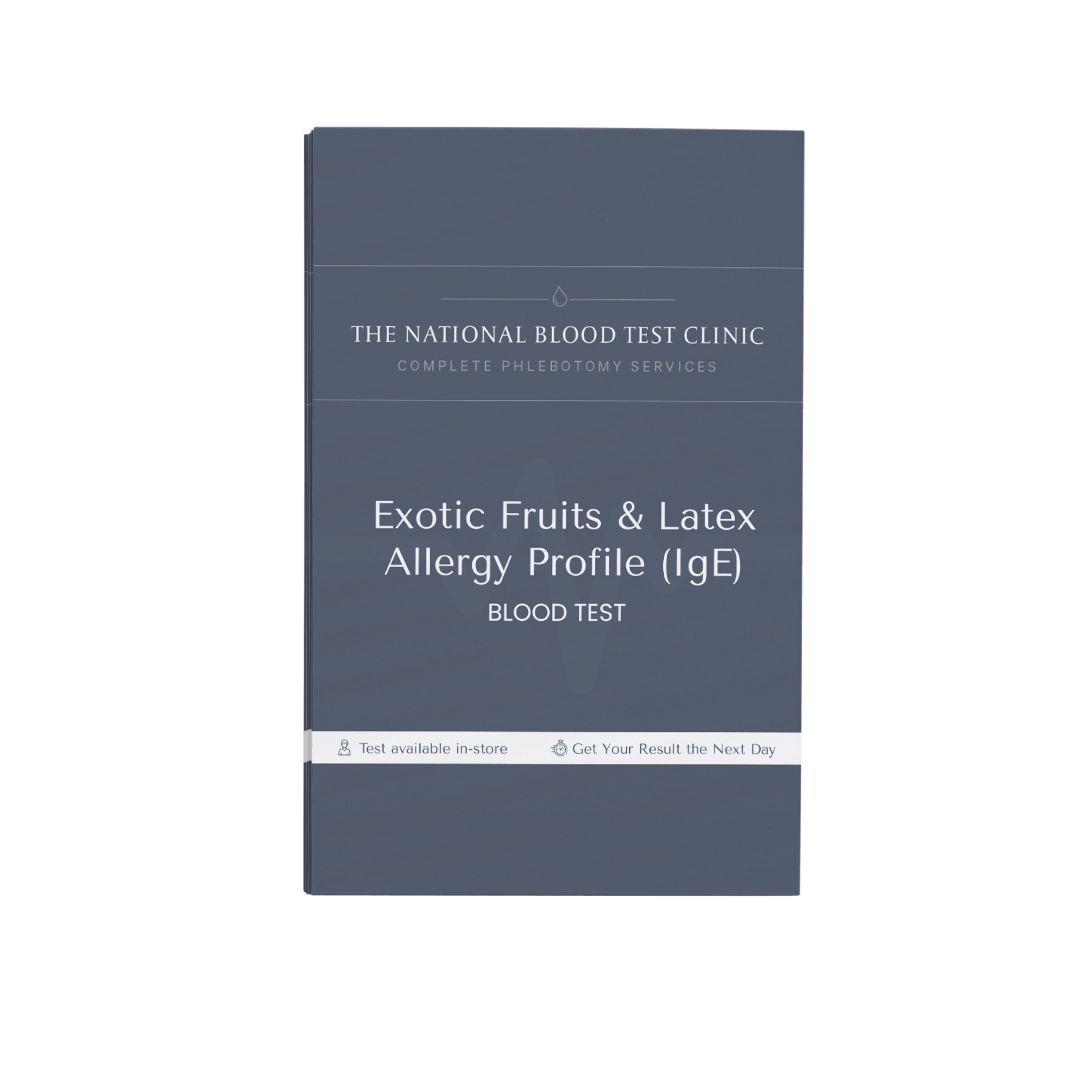My Store
Exotic Fruits & Latex Allergy Profile (IgE)
Exotic Fruits & Latex Allergy Profile (IgE)
SKU:ALL14
Allergic reactions to exotic fruits can cause itching, swelling, rashes, or even breathing issues. This Exotic Fruits & Latex Allergy Profile (IgE) screens for sensitivities to tropical fruits often linked to latex-fruit syndrome, where the immune system reacts to both certain fruits and natural rubber latex. It helps identify cross-reactive allergens, supporting safe food choices and reducing risks of unexpected reactions.
Why Allergy Test for Exotic Fruits and Latex (IgE) Matters?
Latex-fruit syndrome affects many people with fruit allergies, especially to kiwi, banana, or avocado. Since latex is also used in gloves, balloons, and medical equipment, knowing if reactivity exists is vital for both dietary and environmental safety. This test allows individuals to manage allergies effectively, prevent accidental exposure, and make informed lifestyle adjustments.
What Gets Assessed?
- Kiwi
- Banana
- Pineapple
- Papaya
- Mango
- Avocado
- Rubber (R+)
Turnaround Time
- 7 Days
100 in stock
Visit a partner clinic (+£50)
Once you've ordered your test, look out for an email from our phlebotomy partners containing information and a link to book your appointment. We'll send you everything the clinic will need to complete the sample and post it back to our labs.
Organise a nurse yourself
If none of the above options work for you, you can arrange your own medical professional to collect your sample. There is no additional charge for this. Once you've ordered your test, we'll send you everything you and your chosen medical professional will need to collect a sample and post it back to our labs.
Couldn't load pickup availability
Enter Your Details


Visit a partner clinic (+£50)
Once you've ordered your test, look out for an email from our phlebotomy partners containing information and a link to book your appointment. We'll send you everything the clinic will need to complete the sample and post it back to our labs.
Organise a Nurse Yourself
If none of the above options work for you, you can arrange your own medical professional to collect your sample. There is no additional charge for this. Once you've ordered your test, we'll send you everything you and your chosen medical professional will need to collect a sample and post it back to our labs.
How Our Test Works
-

Place Your Order
Place your order online and receive a test kit delivered to your home. You’ll need to bring this kit with you to your scheduled appointment at one of our partner blood collection clinics.
-

Attend Your Appointment
At your chosen clinic, a trained nurse or phlebotomist will collect your blood sample using the kit you bring. If a sample collection courier is not available at the site, you’ll be asked to take the sealed sample with you and post it using the prepaid packaging provided.
-

Receive Your Results
Once your results are ready, you’ll receive an email notification to log in and view them securely via your private portal. Please note: venous blood test results are not automatically reviewed by a doctor. We recommend booking a consultation with a qualified clinician to help you interpret and understand your results fully.
FAQs
Who should consider this test?
This test is recommended for individuals who develop allergic reactions such as itching, swelling, hives, digestive discomfort, or breathing difficulties after eating exotic fruits like kiwi, banana, mango, or pineapple, or when exposed to latex products.
How is the test performed?
A blood sample is collected to measure IgE antibody levels against selected exotic fruits and latex allergens.
Which allergens are included in this panel?
The panel tests for kiwi, banana, pineapple, papaya, mango, avocado, and latex (rubber).
What do the results show?
The results indicate whether your immune system produces IgE antibodies in response to these fruits or latex, confirming specific allergies.
Why is latex allergy included in this panel?
Some exotic fruits share similar proteins with latex, leading to cross-reactivity. This is known as latex-fruit syndrome, which makes this combined test especially useful.
How can this test help with allergy management?
It guides individuals in avoiding trigger foods or latex-containing items and helps healthcare providers develop a personalized allergy management plan.
Subscribe to our emails
Be the first to know about new collections and exclusive offers.





